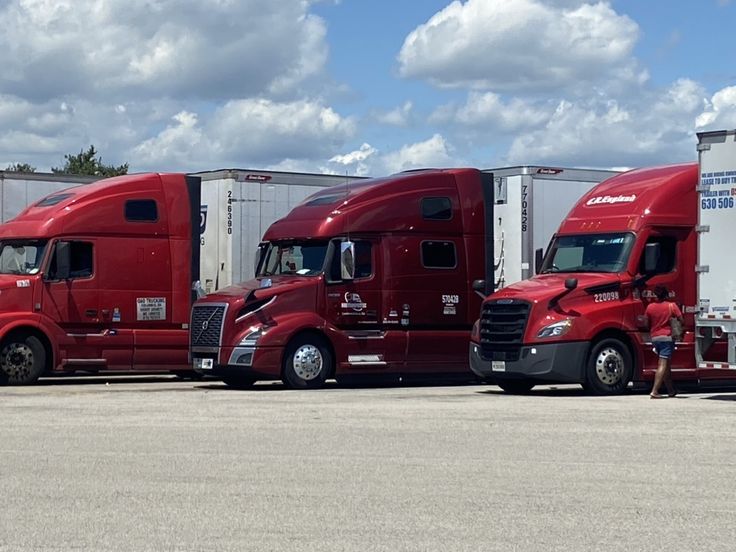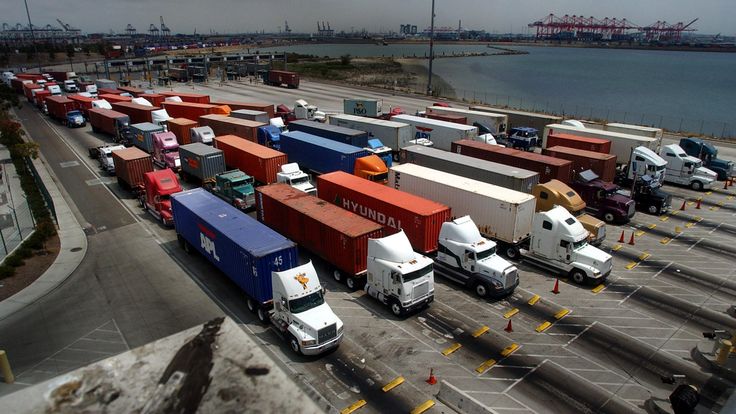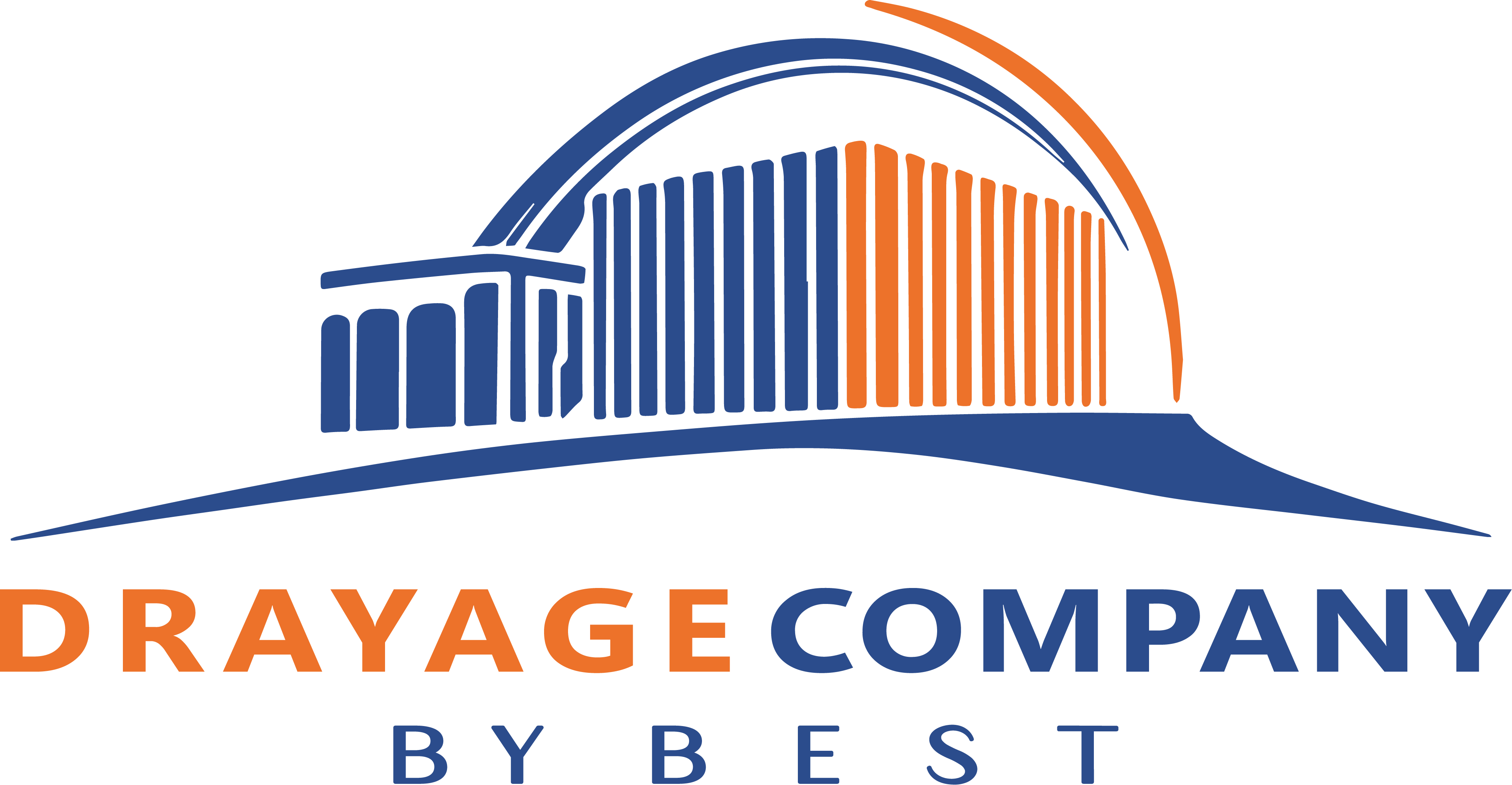Since the 1950s, standardized container shipping has been the most affordable way to transport cargo over long distances, and drayage trucking ensures these containers are efficiently moved to their next destination. Comparing drayage trucking rates is essential for keeping shipping costs manageable, but finding the right balance between competitive pricing and reliable service can be challenging.
Here are five key strategies to compare drayage trucking rates without compromising service quality.
Table of Contents
Key Takeaways
✔ Reliable professional drayage trucking providers prioritize on-time delivery, equipment quality, and experienced drivers. ✔ Established drayage trucking companies with industry certifications and strong customer reviews offer better service consistency. ✔ Flexible scheduling and scalable capacity are essential for handling peak periods and reducing delays. ✔ Transparent communication and real-time tracking improve service reliability and problem resolution. ✔ Proper container loading, accurate labeling, and balanced weight distribution prevent damage and shipping delays. ✔ Identifying red flags like poor licensing, hidden fees, and outdated equipment helps avoid unreliable drayage providers. |

1. Compare Total Costs, Not Just Base Rates
Drayage trucking rates can vary widely based on the type of service, cargo requirements, and hidden fees, with fuel prices often rising in the spring and peaking in late summer, further impacting overall costs. Focusing solely on base rates can lead to unexpected costs that increase the overall expense of the shipment. To make an informed decision, it’s important to evaluate the full scope of costs involved in professional drayage trucking near me services.
How to Break Down Total Costs for Drayage Trucking
- Base Rate vs. Fuel Surcharge: The base rate covers the cost of the trip itself, but many drayage trucking providers add a fuel surcharge that fluctuates with market prices. A lower base rate might seem appealing, but if the fuel surcharge is high, the total cost could exceed that of a slightly higher base rate from another provider.
- Accessorial Fees: Professional drayage trucking companies often charge extra for services like wait times, chassis usage, and container handling. These accessorial fees can add up quickly, especially in congested areas like New York City. Understanding these charges upfront helps avoid surprises and allows for more accurate cost comparisons.
- Port and Terminal Fees: Container drayage trucking involves fees for loading and unloading at ports and terminals, which vary based on the facility and location. Intermodal drayage trucking providers with established relationships at major hubs, especially in New York City, may have negotiated lower terminal fees, which can result in overall cost savings.
2. Evaluate Service Quality and Reliability
Choosing the lowest drayage trucking rate often comes with trade-offs in service quality. Poor communication, missed delivery windows, and equipment failures can lead to costly delays and damaged cargo. A reliable professional drayage trucking provider ensures consistent service, minimizes risks, and keeps supply chains running smoothly.
How to Assess Reliability and Service Quality
- Delivery Performance and On-Time Rates: A professional drayage trucking company should have a strong track record of on-time deliveries, especially for short-haul drayage trucking in a high-traffic area like New York City. Consistent delays not only disrupt schedules but also increase the risk of detention fees and missed connections with intermodal transport.
- Equipment and Fleet Condition: Reliable container drayage trucking depends on the condition of the trucks and handling equipment. Well-maintained trucks reduce the chances of mechanical failures that can lead to delays and increased costs. Professional drayage trucking companies invest in modern equipment to handle high-volume and time-sensitive shipments more efficiently.
- Driver Expertise and Local Knowledge: Experienced drivers with knowledge of port operations and traffic patterns in New York City improve delivery efficiency. Professional drayage trucking providers with local expertise can navigate road closures, construction, and peak traffic times to minimize delivery delays and maximize route efficiency.
3. Research the Provider’s Industry Experience and Reputation
A company’s experience and reputation in the drayage industry are strong indicators of service quality. Long-standing professional drayage trucking companies have the knowledge and infrastructure to handle complex shipping requirements and navigate industry challenges. Partnering with an established provider helps avoid disruptions and ensures seamless transport.
How to Evaluate Industry Experience and Reputation
- Years in Business and Industry Certifications: Established intermodal drayage trucking providers with years of experience have built strong relationships with port authorities, terminals, and rail yards. Membership in industry organizations, such as the Intermodal Association of North America (IANA), indicates a commitment to professionalism and compliance with industry standards.
- Customer Reviews and Testimonials: Look for customer reviews and case studies that highlight service consistency, issue resolution, and overall satisfaction. Positive feedback about professional drayage trucking providers in New York City often reflects strong operational efficiency and customer service.
- Handling of High-Value and Time-Sensitive Shipments: Experienced container drayage trucking companies are better equipped to handle fragile or high-value cargo under time constraints. They have established protocols for safe handling and secure transport, which reduces the risk of damage and delivery failures.
4. Consider Flexibility and Capacity During Peak Periods
Peak shipping seasons and port congestion can create capacity challenges and drive up rates for drayage trucking. Providers with scalable capacity and flexible scheduling can handle increased demand without compromising service quality. A professional drayage trucking company should be able to adjust operations to meet changing shipping needs.
How to Assess Flexibility and Capacity
- Scalable Fleet and Driver Availability: A professional drayage trucking provider with a large fleet and a deep pool of drivers can accommodate volume increases during peak periods. Drayage trucking near me services with established operations in New York City are better positioned to respond quickly to last-minute shipments and changing schedules.
- Flexible Scheduling and Last-Minute Adjustments: Flexibility in scheduling helps avoid delays and detention fees caused by port congestion and shifting delivery windows. Intermodal drayage trucking companies that offer real-time tracking and communication can adjust pickup and delivery times to avoid bottlenecks.
- Priority Access to Ports and Terminals: Established container drayage trucking providers often have priority access to busy ports and rail terminals. This advantage reduces wait times and helps ensure timely container pickup and delivery, even during high-volume periods.
5. Analyze Communication and Customer Support
Transparent communication and responsive customer support are essential for resolving issues quickly and keeping shipments on track. A professional drayage trucking provider should offer real-time updates and direct access to a customer service team. Strong communication minimizes errors, prevents delays, and increases overall operational efficiency.
How to Evaluate Communication and Customer Support
- Real-Time Tracking and Status Updates: Professional drayage trucking companies provide GPS tracking and automated status updates throughout the delivery process. Real-time visibility helps identify potential delays early, allowing for quick adjustments to keep shipments on schedule.
- Dedicated Customer Service Representatives: Having a single point of contact for questions and problem resolution improves service consistency. Professional drayage trucking providers assign dedicated account managers who understand the specific logistics needs of each client.
- Problem Resolution and Response Time: When issues arise, quick resolution prevents cascading delays and added costs. Reputable container drayage trucking providers have structured processes for resolving disputes, handling claims, and addressing unexpected shipping disruptions.
How to Choose the Right Type of Drayage Trucking for Specific Shipments
Selecting the right type of drayage trucking service is essential for ensuring cost efficiency and timely delivery. Different types of drayage trucking are designed to handle specific cargo requirements, transport distances, and handling needs. Understanding these options helps shippers make informed decisions that protect their cargo and reduce overall shipping costs.
1. Intermodal Drayage Trucking for Multimodal Shipments
Intermodal drayage trucking involves transporting containers between different modes of transport, such as rail, truck, and ship. This type of service is ideal for long-distance shipments where containers need to be transferred from one transport mode to another. Professional drayage trucking providers specializing in intermodal transport have the equipment and experience to handle container transfers efficiently, reducing delays and minimizing handling costs.
2. Short-Haul Drayage Trucking for Local and Regional Deliveries
Short-haul drayage trucking focuses on transporting containers over short distances, typically within the same metropolitan area or nearby ports. This service is ideal for businesses in high-traffic areas like New York City that require fast turnaround times. Professional drayage trucking companies with strong local networks and experienced drivers can navigate city congestion and deliver shipments on time.
3. Pier Drayage for Direct Port-to-Destination Transport
Pier drayage involves moving containers directly from the port to a warehouse or distribution center. This type of container drayage trucking is critical for reducing port congestion and avoiding demurrage fees caused by delayed container pickup. Professional drayage trucking providers with established relationships at major ports in New York City can secure faster access to terminals and minimize wait times.
4. Expedited Drayage Trucking for Time-Sensitive Shipments
Expedited drayage trucking is designed for high-priority shipments that need to reach their destination quickly. This service often involves dedicated trucks and direct delivery routes to reduce transit time. Professional drayage trucking providers with real-time tracking and flexible scheduling options can ensure expedited shipments are handled without delays.
5. Container Drayage Trucking for Heavy and Oversized Loads
Container drayage trucking handles specialized cargo that exceeds standard container sizes or weight limits. This type of service requires specialized chassis and equipment to transport heavy or oversized loads securely. Professional drayage trucking companies with the right permits and equipment can handle complex loading and unloading processes, ensuring the cargo reaches its destination safely.
6. Shuttle Drayage for Temporary Storage or Holding
Shuttle drayage involves transporting containers from one holding area to another for temporary storage. This service is useful when warehouse space is limited, or when containers need to be staged before final delivery. Professional drayage trucking companies with access to secure storage facilities can handle shuttle drayage efficiently, reducing the risk of container damage or loss.
How to Prepare a Shipment for Drayage Trucking
Proper preparation is essential for ensuring that shipments arrive on time and in good condition. Professional drayage trucking providers handle containerized shipments, but shippers must take key steps to prevent damage, delays, and additional fees. Thoughtful preparation helps avoid complications at ports, terminals, and delivery points, ensuring smooth transportation.
1. Use the Right Type of Container for the Cargo
Selecting the appropriate container size and type is critical for protecting the cargo during transport. For heavy or oversized loads, reinforced containers with secure locking mechanisms are essential to prevent shifting and damage. Professional drayage trucking near me services can recommend the best container type based on the weight, dimensions, and sensitivity of the shipment.
2. Secure and Block Cargo to Prevent Shifting
Cargo that shifts during transport can lead to damage and increased handling costs. Using dunnage, straps, and load bars helps secure the cargo within the container and prevents movement during short-haul drayage trucking. Professional drayage trucking companies often inspect container loading to ensure the cargo is properly secured before transit.
3. Label Containers Clearly and Accurately
Accurate labeling ensures the shipment reaches the correct destination and avoids delays at ports and terminals. Each container should include the shipper’s name, destination address, handling instructions, and any hazardous material warnings. Professional drayage trucking providers rely on accurate labeling to streamline container handling and prevent misrouting.
4. Verify Weight Limits and Load Balancing
Overloaded or improperly balanced containers can lead to fines, safety issues, and transport delays. Container drayage trucking companies follow strict weight guidelines based on state and federal regulations. Shippers should distribute weight evenly across the container and confirm that the total load does not exceed legal weight limits.
5. Provide Complete and Accurate Shipping Documentation
Incomplete or incorrect documentation can delay customs clearance and delivery. Shippers should provide a complete bill of lading (BOL), packing list, and any required import/export permits. Professional drayage trucking providers rely on accurate documentation to ensure smooth processing at ports and terminals.
6. Plan for Port and Terminal Conditions
Congestion and limited storage capacity at ports and terminals can lead to delays and extra fees. Coordinating delivery windows with container drayage trucking providers helps minimize wait times and detention fees. Professional drayage trucking companies with established relationships at New York City ports can secure faster gate entry and improved handling efficiency.

How to Identify Red Flags When Selecting a Drayage Trucking Provider
Not all drayage trucking providers offer the same level of service, and selecting the wrong company can lead to delays, damaged cargo, and unexpected fees. Professional drayage trucking providers maintain high standards in communication, equipment, and service consistency — any deviations from these standards should raise concern.
1. Lack of Proper Licensing and Valuation
A professional drayage trucking provider should have valid operating authority and cargo valuation. Shippers should verify that the company is registered with the Federal Motor Carrier Safety Administration (FMCSA) and carries sufficient liability and cargo valuation. Operating without proper licenses and valuation increases the risk of legal complications and financial loss if the cargo is damaged or lost.
2. Inconsistent Delivery Times and Poor Performance History
Frequent delivery delays and missed pickup windows are signs of poor operational efficiency. Professional drayage trucking companies maintain consistent on-time delivery rates and communicate clearly about potential delays. A provider with a track record of missed deadlines or unexplained delays may lack the infrastructure or capacity to handle high-volume shipments reliably.
3. Hidden Fees and Unclear Contracts
Some drayage trucking providers include hidden fees for fuel surcharges, wait times, and handling services that are not disclosed upfront. Professional drayage trucking companies provide transparent, itemized quotes that outline all costs clearly. If a contract seems vague or includes ambiguous language about additional fees, it could lead to unexpected charges down the line.
4. Poor Communication and Unresponsive Customer Service
Reliable communication is essential for managing container drayage trucking, especially when dealing with port congestion or shipment delays. If a provider is difficult to reach or fails to provide real-time updates, it indicates poor service management. Professional drayage trucking companies assign dedicated account managers and provide real-time tracking to keep shippers informed.
5. Outdated or Poorly Maintained Equipment
The condition of a drayage provider’s fleet directly impacts delivery reliability and cargo safety. Professional drayage trucking companies invest in modern trucks and container-handling equipment to reduce the risk of breakdowns and delays. A provider with an aging fleet or a high rate of equipment failure may not be able to meet delivery schedules consistently.
6. Lack of Experience with Specialized Cargo or Local Regulations
Handling intermodal drayage trucking, oversized loads, or hazardous materials requires specialized knowledge and equipment. A professional drayage trucking provider should have experience navigating port regulations, customs procedures, and specialized handling requirements. If a company lacks this experience, it may struggle to manage complex shipments or face delays at key hubs like New York City ports.
Frequently Asked Questions (FAQs)
What is the difference between drayage trucking and freight shipping?
Drayage trucking refers to the short-distance transport of containerized cargo, typically between ports, rail yards, and distribution centers. Freight shipping, on the other hand, involves longer-distance transport over land, sea, or air. Professional drayage trucking focuses on efficiently handling containers at busy hubs like New York City, while freight shipping handles the broader transport process.
How does weather affect drayage trucking operations?
Severe weather conditions, such as snow, heavy rain, and high winds, can disrupt drayage trucking schedules and cause port closures. Professional drayage trucking providers monitor weather forecasts and adjust delivery schedules to minimize delays. Container drayage trucking companies with flexible routing capabilities can help reduce weather-related disruptions.
What types of cargo require specialized drayage trucking services?
Oversized, hazardous, and temperature-sensitive cargo often require specialized handling and equipment. Professional drayage trucking providers use reinforced containers, temperature-controlled trailers, and secure locking systems to transport these types of shipments safely. Container drayage trucking companies with specialized experience ensure that these shipments meet all safety and regulatory requirements.
How do tariffs and trade policies affect drayage trucking costs?
Tariffs and trade restrictions can increase costs for imported and exported goods, which impacts container drayage trucking rates. Professional drayage trucking providers stay informed about changes in trade policy and adjust pricing to reflect new regulations. Working with experienced intermodal drayage trucking companies helps shippers navigate these complexities more efficiently.
Can drayage trucking providers help with customs clearance?
Some professional drayage trucking companies offer customs brokerage services or work with third-party brokers to manage documentation and clearance. Proper handling of customs requirements ensures that container drayage trucking shipments are not delayed at ports or terminals. Partnering with an experienced drayage trucking provider helps streamline the customs process and avoid penalties or shipping interruptions.
Get Reliable Drayage Trucking with Drayage Company By Best
Drayage Company By Best delivers professional drayage trucking services tailored to meet the demands of businesses in New York City. With a modern fleet, experienced drivers, and deep knowledge of local port operations, Drayage Company By Best ensures smooth, on-time container transport every time. Whether it’s intermodal drayage trucking or short-haul deliveries, the team handles every detail with precision and efficiency.
Trust Drayage Company By Best to simplify your logistics and keep your supply chain moving—contact us today for a quote!

